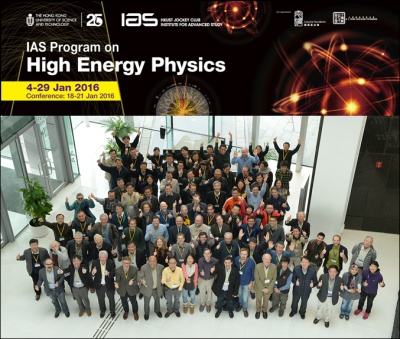Overview
Program: 4-29 January 2016
Conference: 18-21 January 2016
After the discovery of the Higgs boson, the main objectives of high-energy physics are the precise measurement of
Higgs properties and searches for new physics. These objectives strongly motivate the construction of an e+e- Higgs
factory and a new pp collider with energy significantly higher than that of the Large Hadron Collider (LHC).
The Higgs boson plays a crucial role in explaining spontaneous electroweak symmetry breaking and the mass generation
of the known fundamental particles. It is thus important to measure precisely the Higgs-gauge couplings, the Higgs-Yukawa
couplings and the Higgs self-couplings. A future Higgs factory would achieve such a goal significantly better than the LHC can.
Such precise measurements can also unveil any new physics that alter the Higgs properties.
There are good reasons to expect that new physics should emerge at the TeV scale or above. A higher energy pp collider will
be crucial for exploring new physics and the properties of any to-be-discovered particles at the LHC.
The objective of this program is to bring theorists, experimentalists and accelerator physicists together, and provide a
platform for the participants to promote stimulating discussions. During this program, we plan to address issues on the physics, detectors and colliders with emphasis on electron-positron machines that are relevant to the future of high energy physics. As part of this program, a four-day conference
will be held on 18-21 January 2016. We also hope to release some white papers for the particle physics community documenting
the physics goals, options of future colliders, and the reach of the related experiments.

Invited speakers and program participants gather for a group photo.
Joint Organizers
| - |
Center for Future High Energy Physics, Institute of High Energy Physics, Chinese Academy of Sciences, Beijing |
| - |
Joint Consortium of Fundamental Physics, Hong Kong |
Co-sponsors

Croucher Foundation |
|

K. C. Wong Education Foundation |
The program and conference was partially supported by a grant from the
Research Grants Council of the Hong Kong Special Administrative Region,
China (Project No. HKUST4/CRF/13G).
|